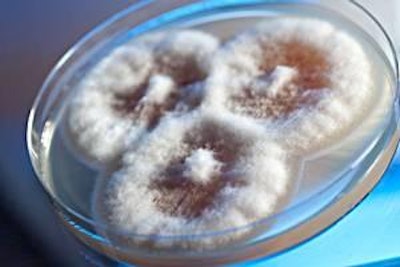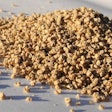
An annual worldwide survey of mycotoxins, conducted since 2004 by Biomin, has found that the most commonly found mycotoxins are fumonisins and deoxynivalenol. Corn is the commodity most affected by fumonisins and, in one sample from North Asia, up to 78,000 ppb of fumonisin were found.
Have fumonisins always been a threat?
The first documented case of probable fumonisin intoxication was in 1970 in South Africa, where horses with equine leukoencephalomalacia were found to have been fed moldy corn.
The predominant fungus found then was Fusarium verticillioides. An identical fungus was found at approximately the same time in an area with a high incidence of human esophageal cancer and where there had been consumption of moldy home-grown corn. In 1984, it was confirmed that the culture material of F. verticillioides not only caused equine leukoencephalomalacia in horses but also porcine pulmonary edema in pigs.
Fumonisin toxicity revealed
The chemical structures of fumonisin B1, FB1, and fumonisin B2, FB2, were first reported in 1988.
The structural similarity of fumonisins to the sphingoid bases: sphinganine and sphingosine is crucial to their toxicity. Fumonisins disrupt sphingolipid metabolism and block the synthesis of complex sphingolipids from sphinganine and sphingosine. Sphingolipids participate in many processes in the body, and so fumonisins can negatively influence, for example, the functioning of various organs, including the liver, kidneys and brain, systems ,and the vasculature and nervous system, and body processes, including fatty acid metabolism and uptake of folic acid, in the affected animal.
Negative effects in poultry
Compared to swine, poultry are less sensitive to fumonisins. Turkeys are more sensitive than broilers or laying hens, yet, fumonisins can still have several negative effects on poultry. They can be summarized as follows:
- Fumonisins have a significant impact on the immune system
- FB1 is hepatotoxic to all animal species tested, including poultry
- Fumonisins have a negative effect on the intestinal tract and increase the incidence of intestinal pathogens
- Fumonisins are considered as carcinogens
Immune system is the first affected
In poultry, fumonisins reduce thymus weight, antibody response to sheep red blood cells and immunization against Brucella abortus and Newcastle disease.
The most important immunosuppressive effects of fumonisins in poultry are:
- Reduced thymus weight
- Reduced antibody response to sheep red blood cells
- Reduced immunization against Brucella abortus and Newcastle disease
- Reduced macrophage numbers
- Decreased phagocytic ability of macrophages, leading to increased susceptibility to bacterial infections
- Decreased total white blood cell counts
- Induced diffuse thymic cortical thinning, mild bursal follicular atrophy and mild splenic lymphocyte depletion
- Decreased lymphocyte response to Salmonella gallinarum infection
- Increased susceptibility to S. gallinarum infection
The worldwide occurrence of fumonisins shown in the Biomin mycotoxin surveys is alarming. It demonstrates the need for an effective mycotoxin risk-management program is to avoid economic losses associated with mycotoxins, such as fumonisins.
Materials promoting the adsorption of mycotoxins might be successful with respects to aflatoxins, but they are not effective in preventing the toxic effects of Fusarium mycotoxins, such as fumonisins, trichothecenes or zearalenone.
Biotransformation as the latest promising approach
Biotransformation is the irreversible conversion of mycotoxins into less- or non-toxic molecules by enzymes or microorganisms.
Biotransformation methods have been developed to fill the gap that cannot be addressed by mycotoxin binders – that is, the elimination of the negative effects of less- or non-adsorbable mycotoxins. This approach can degrade FB1 into the non-toxic metabolite hydrolyzed FB1, or HFB1. Like physical adsorption, the degradation takes place in the gastrointestinal tract of animals fed mycotoxin-contaminated feed, thus reducing the risk posed by contaminated feed.






